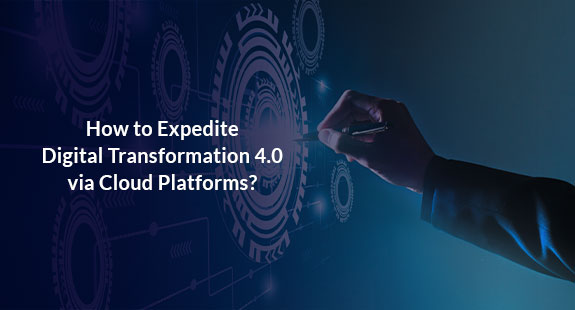The cloud is everywhere. Whether working from home or attending online classes, operating your bank account digitally, or booking a transportation service, cloud technology has become essential to everyday life. Today’s organizations, from startups to multi-national companies, understand and accept how this one technology alone has fueled operations and business growth. Ignoring the opportunities, the cloud offers is akin to writing your business obituary. Particularly in the post-pandemic era.
While cloud adoption was gaining ground even before 2020, the pandemic consolidated its position as the go-to technology for enabling work and business operations anytime, anywhere. The pandemic forced businesses and government agencies to shift from legacy systems to the cloud to accelerate their Digital Transformation 4.0 journey.
The Key Benefits of Migrating to the Cloud
By choosing the cloud as their digitalization enabler, organizations can innovate swiftly, scale efficiently, increase speed-to-market, and minimize technological obsolescence risks. The top advantages that cloud migration offered and continues to provide businesses with include:

Seamless accessibility
The cloud helps build highly connected IT environments wherein team members can collaborate and exchange information while working from any location. Platforms such as AWS, Google Workspace, Azure, Salesforce, and Adobe Creative Cloud enable users to access and update data in real-time from anywhere through any device while keeping others with access to the same data in the loop.

Scope for automation
Compared to on-premises systems that primarily rely on manual processes, cloud technology creates more possibilities for automating rote tasks. Enterprises can make it simpler to build a digital infrastructure with automated backups of data, provisioned version control for workflows, user access control, and as-a-service models. They allow people to work in tandem with automation so that the workforce can be deployed for tasks requiring higher cognitive abilities.

Flexible scalability and elasticity
Organizations operating on the cloud do not need to spend weeks scaling up or down their digital resources as they would typically do with legacy IT infrastructure. Cloud service providers can quickly add or reduce nodes, servers, and storage space to address dynamic business needs and the amount of data being handled.
Cloud elasticity is a similar concept. It enables the system to expand or contract in line with workload demands. The main difference between scalability and elasticity is the time factor. Cloud elasticity handles short-term requirements, such as a spike in website traffic during festive offers. With scalability, businesses can extend the scope of their cloud resources for long-term, strategic growth.
Cloud Migration Opportunities for Manufacturing Industry
According to a report, “Redefining Manufacturing for the Digital Era,” published by Wipro FullStride Cloud Services, the manufacturing industry is leading all other industries in cloud adoption, with 32 percent of manufacturers having achieved “cloud leader” status. The report also indicates that manufacturers who have adopted the cloud expect the technology to expand into every single area of their business in the next couple of years.
Redefining Manufacturing for the Digital Era
32 percent of manufacturers having achieved “cloud leader” status

Other findings of the report also include:
- Cloud-based technologies are the driving force behind the manufacturing industry’s rapid business transformation
- By implementing cloud migration, 40% of European manufacturers made significant progress in key activities such as IT administration, production, planning, procurement, and supply chain operations
- The adoption of the cloud has led to an increase in productivity for 56% of all manufacturers
- Manufacturers at all levels of cloud adoption reported an increase of 51% in the quality of their planning and decision-making
Managing the Security Risks of Cloud Migration for Effective Digital Transformation 4.0
- While most enterprises today are willing to initiate and expedite their digital transformation using cloud services, they are also concerned about the associated security risks and downtime issues. The responsibility for cloud security must be shared between service providers and users. Although renowned vendors use advanced techniques to keep their platforms safe and secure, IT teams at user companies must also be well-trained in cloud security.
- It is vital for users to opt for applications that have features such as zero-trust architecture, end-to-end encryption, virtual firewalls, multifactor authentication, DNS security, and intrusion detection systems. Businesses should opt for private cloud when they have a budget for it.
- To ensure that operations are not interrupted by technical issues, businesses must use cloud services with SLA-backed uptime.
Addressing other deployment challenges:
Many business leaders continue to use conventional technology implementation models, and this tactic makes it almost impossible to seize the actual value from the cloud. When they define their cloud opportunities thinly with siloed enterprise initiatives such as hosting a couple of next-generation applications or a data center, failure is almost inevitable. The chances of a collapse are high because organizations do not adequately consider how their processes will function holistically within the cloud and what kind of cloud environments different processes will need: private, public, or hybrid.
To reap value from cloud-enabled digital transformation 4.0, the three strategies to focus on are:
- Channelize investments into domains where the cloud can measurably improve revenues and profit margins
- Choose the technology and sourcing models that align with business strategies and risk management systems
- Build and deploy new operating models that are oriented around the cloud from their very first stage
Creating Value with Cloud
The key to drawing value from the cloud is to know where its speed, accessibility, agility, scalability, resilience, and cost-saving capabilities can bring quicker, more secure, and long-lasting outcomes. Cloud computing is often at the center of bringing about cohesive growth, a higher degree of collaboration and transparency across the enterprise and improving business agility.
For the manufacturing industry, the cloud facilitates on-demand availability of critical data and advanced analytics, empowering engineers to act quickly on real-time information and resolve issues. It therefore drives process improvements and reduces dependency on an iterative approach to refining products and operations.
Cloud computing enables a higher degree of automation, freeing resources to focus on more critical aspects of the business, and helping manufacturers save time and costs. It streamlines repetitive tasks and coordinates them with a unified approach to achieve planned goals. Companies can harness cloud solutions to manage and protect their information securely from any device.
Another high-value area is the cloud’s application in Supply Chain 4.0 for better collaboration and data visibility. The technology enables manufacturers to improve their inventory planning and reduce forecasting errors. At the same time, it enhances the customer experience with instant responses on product availability and tracking details for orders placed.
Lastly, a planned move to the cloud is not merely about “lifting and shifting” apps and data from on-premises servers to cloud platforms. It requires companies to have exceptional capabilities, and they should not hesitate to consult digital transformation experts wherever necessary.




